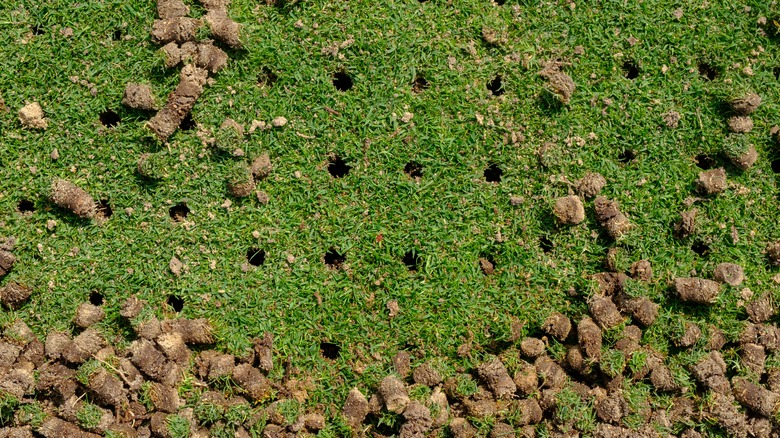When was the last time you took a really close look at your lawn, not just the blades of grass, but also the surface of the ground? Doing so may reveal a top layer of thatch, which, Scotts describes as a build-up of dead plant material on the ground’s surface. That layer could be suffocating your grass, limiting its ability to grow as healthy as it could. Thatch can prevent vital air and nutrients from making it into the soil and roots — if your grass feels spongy and soggy, it could be time to give it some attention.
One of the most effective ways of getting rid of the problem is to aerate your lawn. This is a process that helps open up the ground through the removal of small plugs of grass, which allows better penetration of nutrients and air and promotes healthy growth. In addition, choosing the correct time to aerate is also essential.
The best time to aerate your lawn

The best time to aerate your lawn is usually when it reaches its highest level of natural growth, according to Pennington. While the best season to aerate your lawn depends on the type of grass you’re growing, if you aerate while it’s active and robustly growing, the grass has a better opportunity to recover from the process — aeration is good for the grass, but it does stress it some.
If you are growing cool-season grass, which is most common in northern areas of the U.S., the best time to aerate is during the early fall, when the grass is still growing and lush. The early spring may also be beneficial if you know the grass needs aeration to perform well during the remaining summer months. For those in southern areas of the country with warm-season grasses, it’s important to be a bit more particular about when to aerate due to high temps. Generally, you’ll want to aerate during the late spring months or the start of summer.
How often do you need to aerate?
Many professionals, including tree experts Davey, recommend annual aeration. How often typically depends on the type of soil. Hard soils, like clay, become compacted easily, and that can make it hard for air to penetrate into the grass. If your soil is looser and contains more sand, you may not need to aerate as often because water can easily get into the soil.
Keep in mind that it is possible to over aerate. Remember, aeration is taxing on your lawn and requires a period of recovery. As a result, you don’t want to do this so often that the grass doesn’t have time to recover. If you have average soil that’s rather loose, aerating every two to three years may be sufficient. If you’re unsure about the frequency of your lawn’s needs, you may need to ask your local lawn care pro to take a look at your soil and overall lawn health to determine if more frequent aerating is necessary.